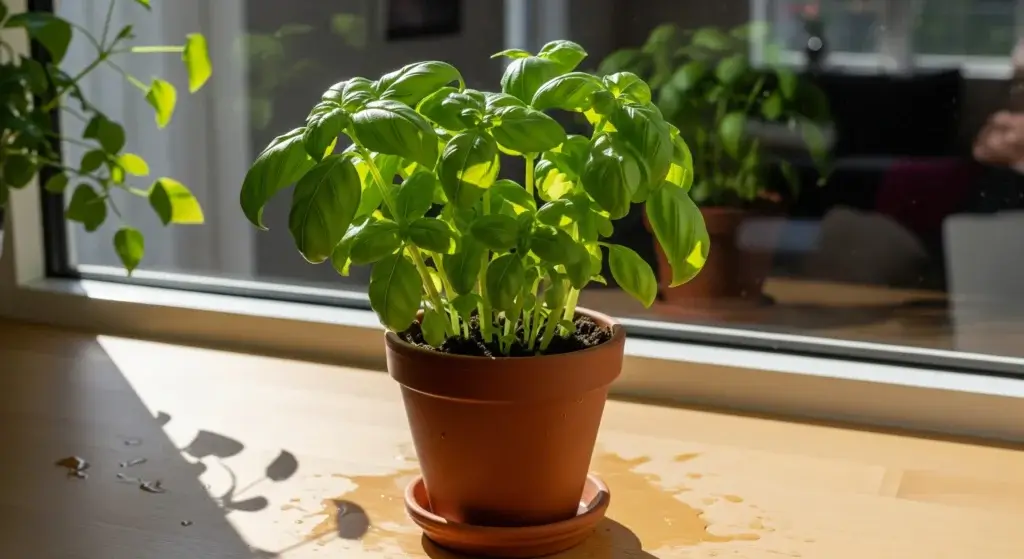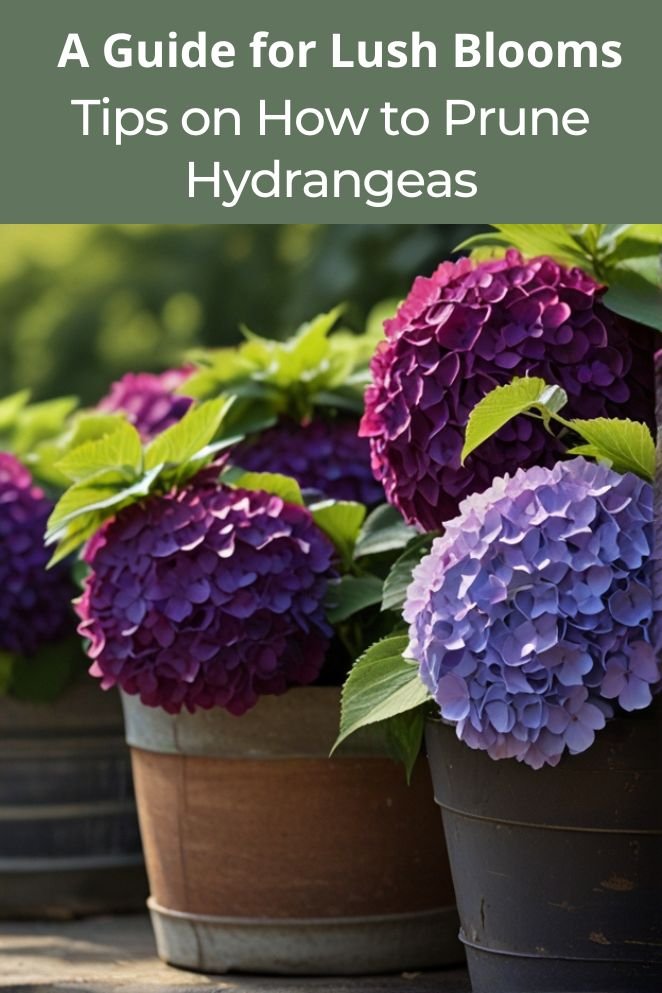
Pruning hydrangeas is a crucial part of their care, as it helps to promote healthy growth, encourage blooming, and maintain their shape.
With so many types of hydrangeas available, it can be overwhelming to know where to start.
In this article, we will break down the different types of hydrangeas and their pruning needs, as well as provide general pruning tips and techniques to help you achieve the best results.
Why Pruning Hydrangeas is Important
Pruning hydrangeas isn’t just about shaping bushes, it’s a vital aspect of caring for these beloved garden plants.
Encourages vibrant blooms
Imagine your hydrangeas bursting with vibrant blooms, each one a testament to your gardening prowess.
Pruning plays a crucial role in achieving this spectacle by prompting new growth, where those gorgeous flowers will blossom.
By trimming away older branches, you’re essentially making room for fresh stems to thrive and dazzle you with their beauty in the upcoming season.
- Read also: A Guide on How to Grow Hydrangeas in a Pot
- Read also: Answered: Why Are White Hydrangeas Turning Green?
Maintains plant health
Think of pruning as a health check for your hydrangeas.
By snipping away dead, diseased, or damaged branches, you’re effectively eliminating potential entry points for pests and diseases.
This proactive measure allows your hydrangeas to channel their energy into healthy growth and abundant flower production, ensuring they remain robust and resilient.
Controls size and shape
Left unchecked, hydrangeas can sprawl and overwhelm your garden space.
Pruning gives you the power to sculpt and tame these exuberant bushes, ensuring they fit seamlessly into your garden design.
Whether you prefer neat and compact bushes or a more free-flowing aesthetic, strategic pruning helps you achieve the desired size and shape for your hydrangeas.
Promotes air circulation
Picture a gentle breeze wafting through your garden, whispering secrets to your lush hydrangea bushes.
Pruning facilitates this delightful scenario by preventing dense, overgrown foliage that can impede air circulation.
Improved airflow not only enhances the overall health of your hydrangeas but also reduces the risk of fungal diseases, ensuring they thrive in a well-ventilated environment.
Enhances overall appearance
There’s something undeniably satisfying about admiring a well-groomed garden, with every plant exuding its full potential.
Pruning hydrangeas isn’t just about maintaining their health; it’s also about enhancing their aesthetic appeal.
By deadheading spent blooms and tidying up unruly branches, you’re giving your hydrangeas a polished, picturesque appearance that elevates the beauty of your outdoor space.
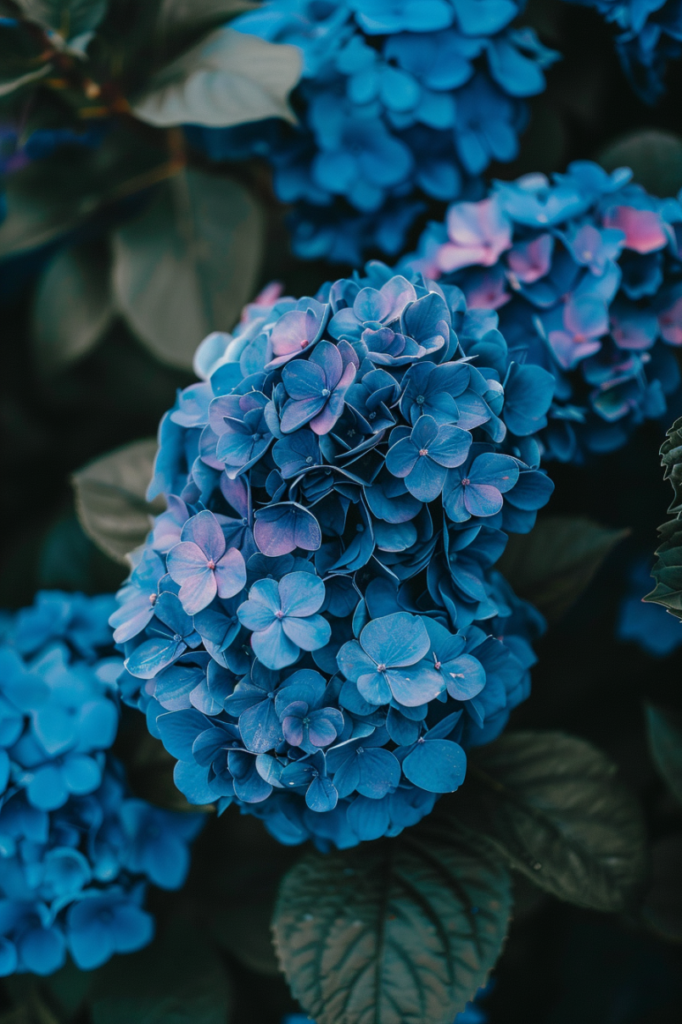
Different Types of Hydrangeas and Their Pruning Needs
There are several types of hydrangeas, each with its own unique pruning needs.
Here are some of the most common types of hydrangeas and their pruning needs:
Bigleaf Hydrangeas (Hydrangea macrophylla)
Bigleaf hydrangeas, with their stunning clusters of large, showy flowers, bloom on old wood – meaning the growth from the previous year.
These delicate beauties benefit from light pruning immediately after flowering or in late winter/early spring.
By trimming them lightly, you encourage new growth and ensure a profusion of blooms in the coming season.
It’s like giving them a gentle nudge to flourish and dazzle with their vibrant colors.
Panicle Hydrangeas (Hydrangea paniculata)
Panicle hydrangeas, known for their elongated, cone-shaped flower clusters, bloom on new wood – the current year’s growth.
For these hardy specimens, pruning in late winter or early spring is key.
By trimming them at this time, you promote bushier growth and larger, more abundant blooms.
Think of it as setting the stage for a spectacular floral display, with each bloom adding to the beauty of your garden.
Smooth Hydrangeas (Hydrangea arborescens)
Smooth hydrangeas, with their rounded clusters of blossoms, also bloom on new wood.
Like their panicle counterparts, they benefit from pruning in late winter or early spring.
By trimming them at this time, you not only control their size but also encourage a lavish profusion of blooms.
It’s akin to giving them a fresh start, ensuring they flourish and thrive throughout the growing season.
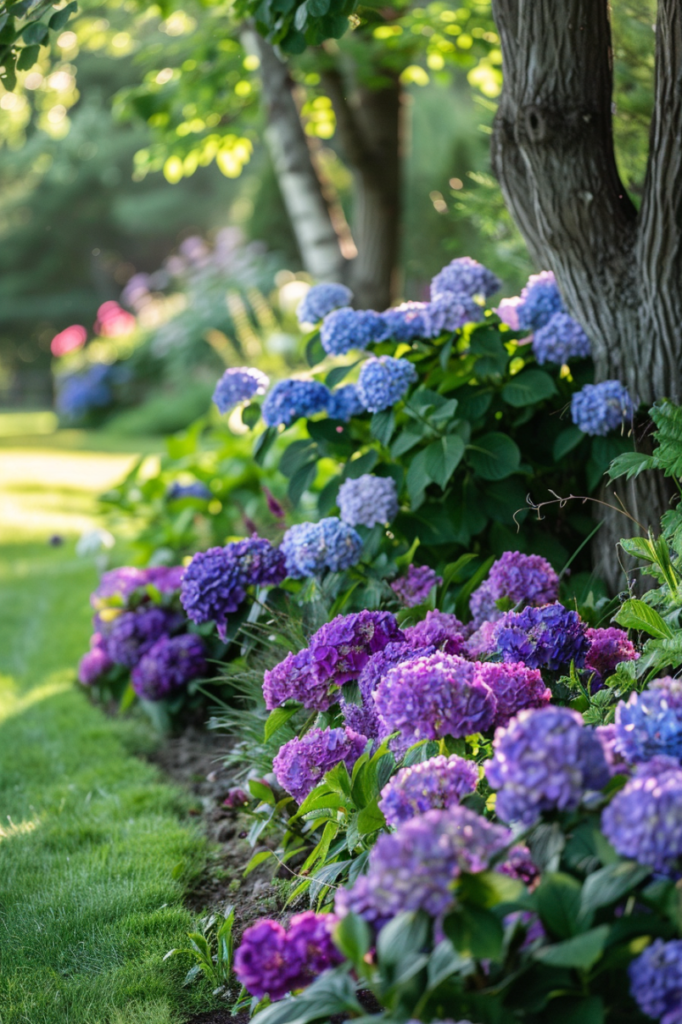
General Pruning Tips
Sharp tools
Just as a chef relies on sharp knives for precise cuts, gardeners need sharp pruning shears or loppers for clean cuts.
Dull tools can crush stems, leading to jagged edges and potential damage to the plant.
By investing in quality, sharp tools, you ensure cleaner cuts that promote quicker healing and overall plant health.
Cutting techniques
When it comes to pruning, precision is key.
Cut just above a bud or at an outward-facing angle to encourage healthy growth.
This strategic approach directs new growth away from the center of the plant, promoting better airflow and reducing the risk of disease.
It’s like giving your hydrangeas a roadmap for optimal growth and vitality.
Deadheading
Removing spent blooms isn’t just about aesthetics; it’s also about promoting ongoing flowering, depending on the hydrangea variety.
Deadheading involves snipping off faded blooms, which not only improves the appearance of your plant but can also stimulate the production of new blooms.
It’s like giving your hydrangeas a fresh start, ensuring they continue to grace your garden with their beauty.
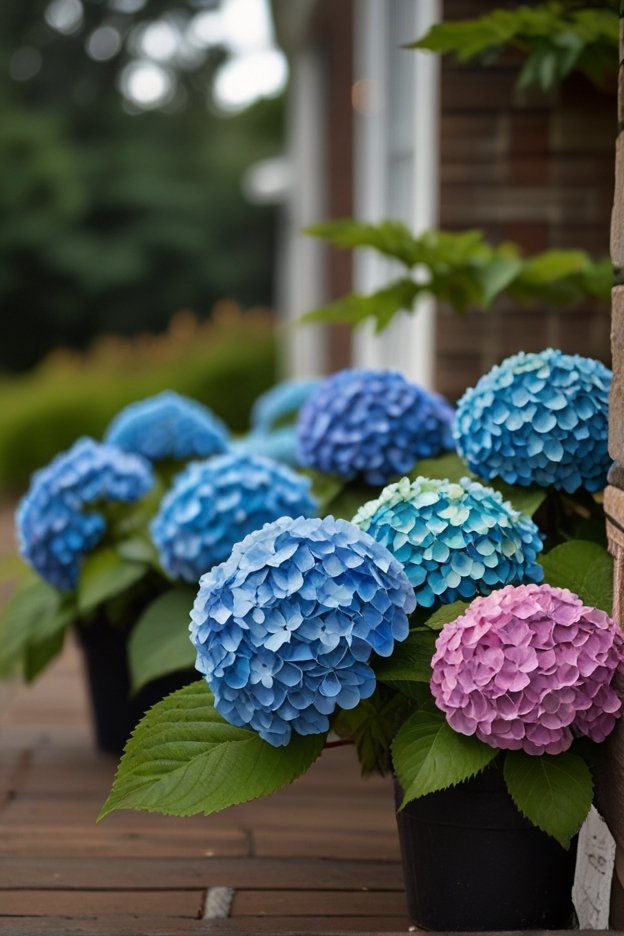
Pruning for Specific Goals
Encouraging larger blooms
For those who crave show-stopping blooms, thinning out older stems is the key.
This practice improves air circulation around the plant, reducing the risk of disease and encouraging the development of larger, more robust blooms.
It’s like giving your hydrangeas some breathing room to flourish and showcase their full potential.
Rejuvenating overgrown bushes
If your hydrangeas have become unruly and overgrown, fear not; rejuvenation is possible.
Prune overgrown hydrangeas gradually over several seasons to avoid shocking the plant.
By selectively removing older, woody stems each year, you give your hydrangeas the chance to regrow and revitalize themselves, ensuring a healthier and more balanced appearance over time.
Shaping your hydrangeas
Much like sculpting a work of art, shaping your hydrangeas requires finesse and an eye for detail.
Prune for desired shapes while keeping in mind the natural growth habit of your hydrangea variety.
Whether you prefer a neat, compact bush or a more free-flowing form, strategic pruning allows you to mold your hydrangeas into the perfect addition to your garden landscape.
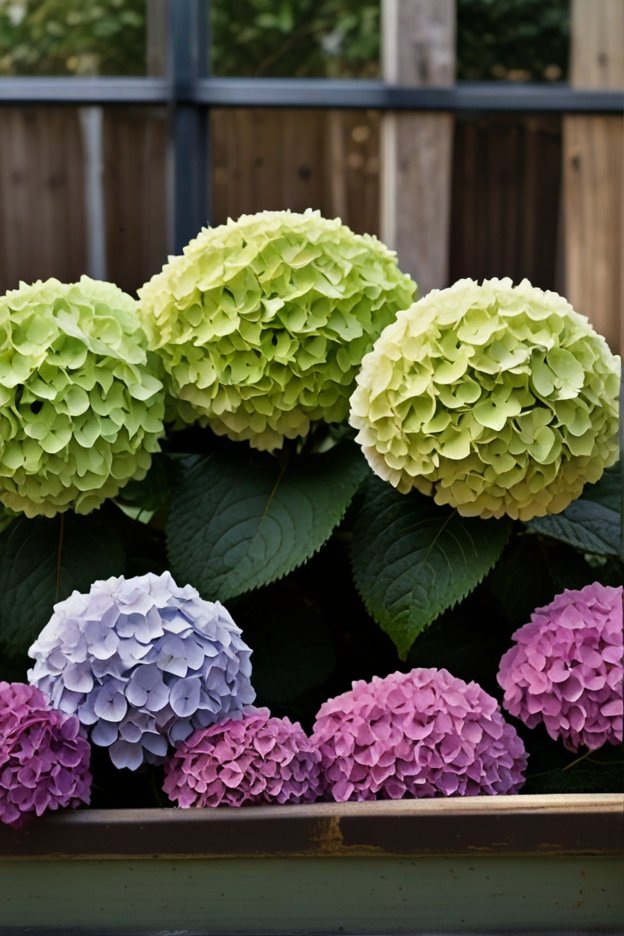
Hydrangea Pruning Mistakes to Avoid
Here are some common mistakes to avoid when pruning hydrangeas:
Pruning at the wrong time
Timing is crucial when it comes to pruning hydrangeas.
Pruning at the wrong time can disrupt the plant’s flowering cycle, potentially robbing you of next year’s blooms.
Most hydrangeas should be pruned in late winter or early spring, while climbing hydrangeas benefit from pruning in early summer when they finish flowering.
Using blunt tools
Just as a blunt knife can ruin a perfectly ripe tomato, using dull or blunt pruning tools can lead to poor cuts and harm your hydrangea plant.
Sharp and clean pruning tools ensure clean cuts that promote faster healing and reduce the risk of disease.
Pruning at the wrong angle
Pruning at the wrong angle is akin to giving your plant a jagged haircut; it’s unflattering and can impede healthy growth.
To avoid damaging the plant, prune at a 45-degree angle, cutting just above a bud or at an outward-facing angle.
Being overzealous
We’ve all been guilty of getting carried away with the pruning shears, but overpruning can spell trouble for your hydrangeas. I
t’s like trying to squeeze into a pair of jeans two sizes too small; it’s uncomfortable and stressful.

- Read also: The Art of How to Grow Climbing Hydrangeas
- Read also: Sculpting Elegance: A Guide to Desert Rose Plant Pruning
Conclusion
Pruning hydrangeas is an essential part of their care, and with these tips and techniques, you can unlock their full potential.
Remember to prune at the correct time for each hydrangea variety, use sharp tools, and make clean cuts to promote healthy growth and encourage blooming.
By following these guidelines, you can enjoy beautiful, thriving hydrangeas in your garden for years to come.
FAQs
Prune your hydrangeas at the correct time for each variety. Bigleaf hydrangeas should be pruned lightly after flowering or in late winter/early spring, while panicle and smooth hydrangeas should be pruned in late winter or early spring.
Thin out older stems to improve air circulation and promote larger blooms.
Yes, pruning too severely can significantly reduce or eliminate blooms for the season. Prune gradually and carefully to avoid this.
Prune your hydrangeas regularly to maintain their shape and size. You can also prune them more severely if they become overgrown, but be careful not to sacrifice blooms.



